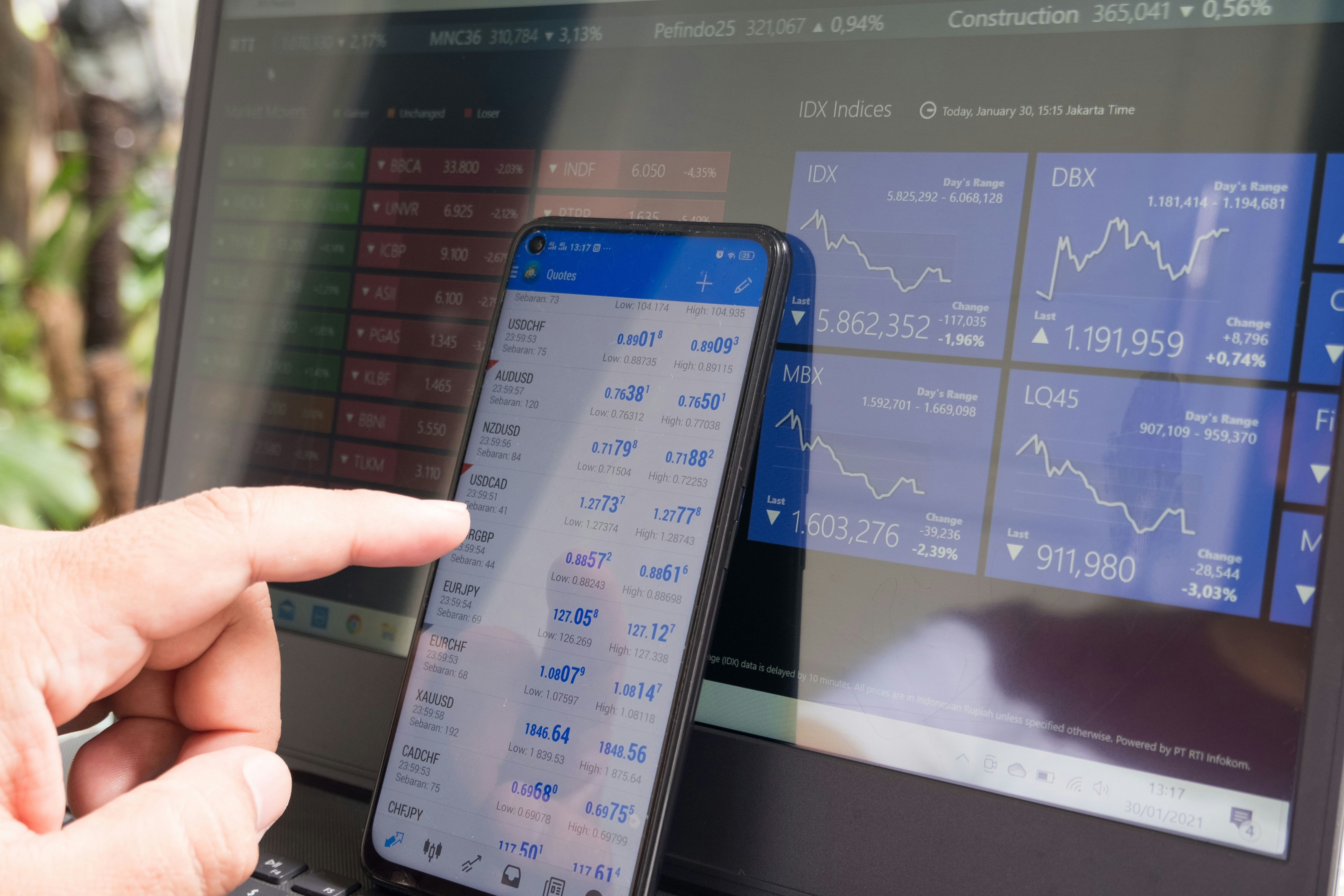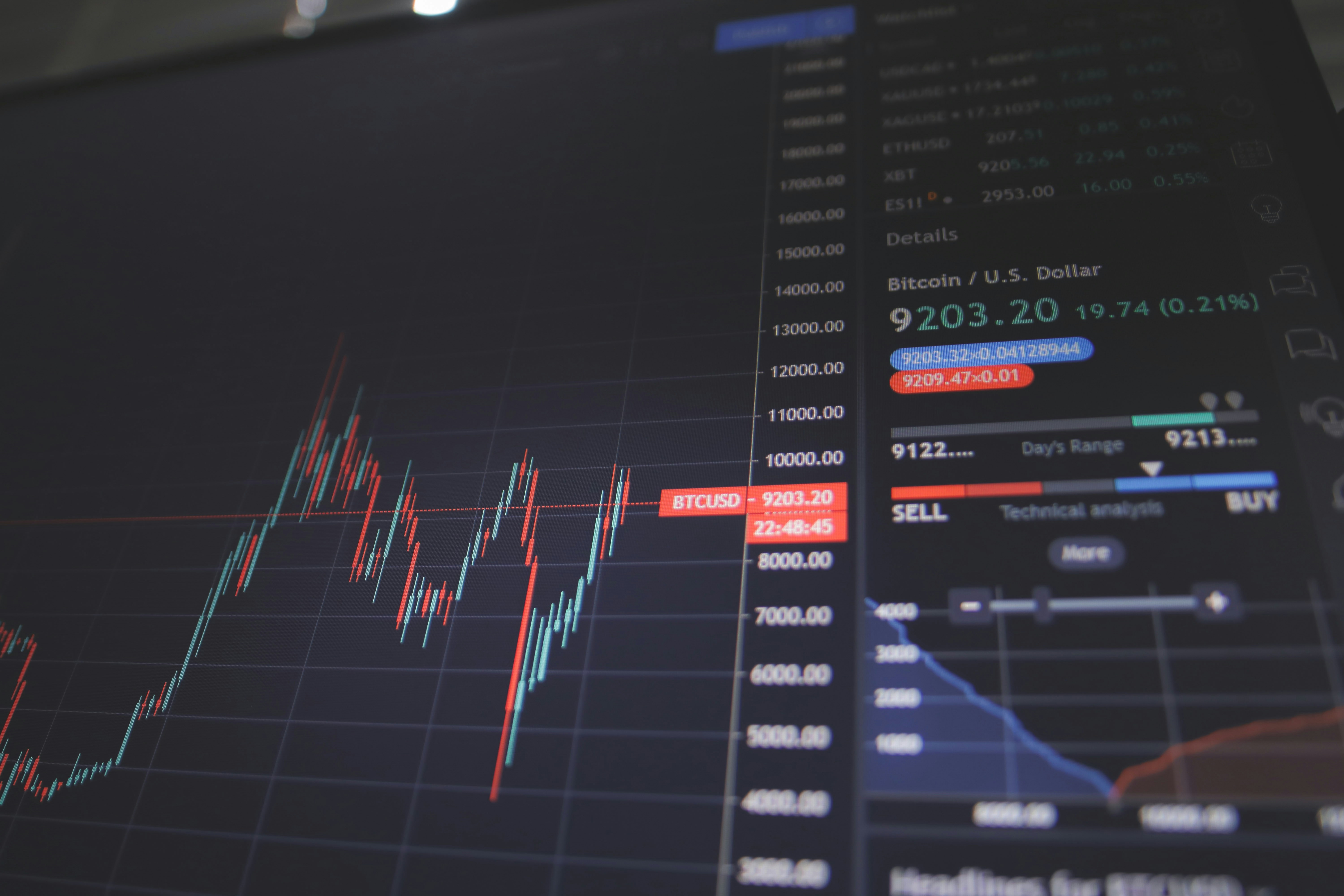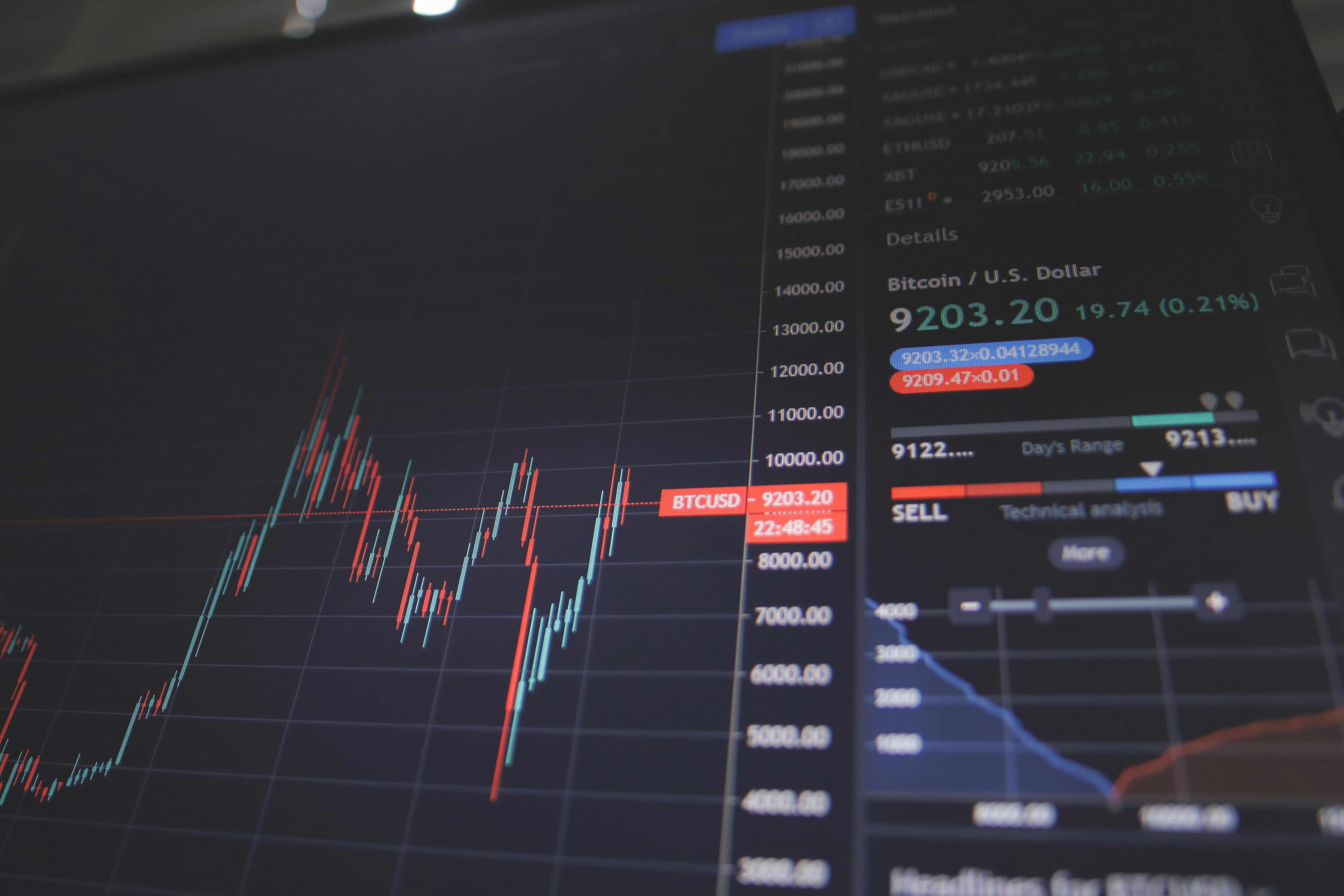
Introduction to Forex Trading
Forex trading, often referred to as foreign exchange or FX trading, involves the buying and selling of currencies on a global market. The Forex market is the largest and most liquid financial market in the world, with daily trading volumes exceeding $6 trillion. This dynamic market operates 24 hours a day, five days a week, allowing traders from around the world to engage in currency trading at any time.
The basic mechanics of Forex trading involve the simultaneous exchange of one currency for another. Currencies are traded in pairs, such as EUR/USD or GBP/JPY, where the first currency is known as the base currency and the second as the quote currency. The goal is to profit from fluctuations in the exchange rates between these currency pairs. For instance, if a trader believes that the Euro will strengthen against the US Dollar, they might buy the EUR/USD pair, anticipating that the value of the Euro will rise relative to the Dollar.
The global nature of the Forex market presents numerous opportunities for profit. Unlike other financial markets that are confined to specific hours, Forex trading is conducted over-the-counter (OTC), meaning trading occurs directly between parties, without a centralized exchange. This decentralized structure allows for continuous trading and enhanced liquidity. Moreover, the market's sheer size and scope make it nearly impossible for any single entity to manipulate prices for an extended period, promoting a more transparent trading environment.
However, Forex trading is not without its risks. The high degree of leverage commonly available in Forex trading can amplify both gains and losses. Market volatility, geopolitical events, and economic data releases can lead to significant price swings, which might result in substantial financial losses. It is crucial for traders to employ risk management strategies and stay informed about global economic conditions to navigate this complex market effectively.
Understanding Forex Market Basics
The Forex market, or foreign exchange market, is a global decentralized market where currencies are traded. It operates 24 hours a day, five days a week, and is the largest financial market in the world, with a daily trading volume exceeding $6 trillion. Understanding the basics of this market is crucial for anyone looking to trade forex smartly.
One of the fundamental concepts in Forex trading is the currency pair. All Forex trades involve the simultaneous buying of one currency and selling of another, which is why currencies are quoted in pairs, such as EUR/USD (Euro/US Dollar) or GBP/JPY (British Pound/Japanese Yen). The first currency in the pair is the base currency, and the second is the quote currency. The price of the pair indicates how much of the quote currency is needed to purchase one unit of the base currency.
Another essential element is the concept of pips, which stands for "percentage in point" or "price interest point." A pip is the smallest price move that an exchange rate can make based on market convention. For most currency pairs, a pip is 0.0001, but for pairs involving the Japanese Yen, a pip is 0.01. Understanding pips is crucial for calculating profits and losses in Forex trading.
Spreads are also a key concept. The spread is the difference between the bid price (the price at which the market is willing to buy a currency pair) and the ask price (the price at which the market is willing to sell a currency pair). Spreads can vary depending on market conditions, and lower spreads generally indicate a more liquid market.
Leverage is another significant aspect of Forex trading. It allows traders to control a larger position with a smaller amount of capital. For example, a leverage of 100:1 means that with $1,000, a trader can control a $100,000 position. While leverage can amplify profits, it can also magnify losses, making it a double-edged sword that must be used with caution.
These basic elements—currency pairs, pips, spreads, and leverage—interact and influence trading decisions in the Forex market. For instance, a trader might choose a currency pair with a low spread to minimize trading costs or use leverage to increase potential returns. Understanding these basics lays the foundation for more advanced trading strategies and helps traders make informed decisions.
Choosing the Right Forex Broker
Selecting a reliable Forex broker is crucial for any trader aiming to succeed in the complex world of forex markets. A key factor to consider is regulation; ensure that the broker you choose is regulated by a reputable financial authority, such as the Financial Conduct Authority (FCA) in the UK or the Commodity Futures Trading Commission (CFTC) in the US. Regulation provides a layer of security, ensuring that brokers operate transparently and adhere to strict guidelines, which in turn helps protect your funds.
The security of funds is another critical aspect. Opt for brokers that segregate client funds from their operational funds, thereby safeguarding your investments in case the broker encounters financial difficulties. Additionally, consider the range of services offered. Some brokers specialize in major currency pairs and offer limited trading tools, while others provide a broader range of instruments, including commodities, indices, and cryptocurrencies, along with advanced analytical tools and educational resources.
Understanding the different types of brokers is also essential. Market makers often provide fixed spreads and can offer more stability in volatile markets. However, they may trade against their clients, leading to potential conflicts of interest. On the other hand, ECN (Electronic Communication Network) brokers connect traders directly to the interbank market, offering tighter spreads and greater transparency but often at the cost of higher commissions.
When choosing a Forex broker, it's beneficial to have a checklist of criteria. Consider factors such as regulation, security of funds, range of services, type of broker, trading platforms, and customer support. A robust trading platform is vital, providing essential features like real-time data, charting tools, and ease of use. Customer support should be readily available and responsive, offering assistance through various channels such as phone, email, and live chat.
In summary, taking the time to carefully evaluate and select the right Forex broker can significantly impact your trading success. Prioritize regulation, fund security, service range, broker type, platform quality, and customer support to make an informed decision.
Developing a Forex Trading Strategy
Creating a well-defined Forex trading strategy is crucial for achieving consistent success in the volatile currency markets. A trading strategy serves as a roadmap, guiding traders through the complexities of market movements and helping them make informed decisions. Among the various strategies available, trend following, scalping, and swing trading are some of the most popular approaches.
Trend following is a strategy that involves identifying and capitalizing on market trends. Traders who adopt this method look for established trends and aim to ride the momentum until signs of a reversal appear. This strategy requires patience and a keen eye for market signals, making it suitable for traders with a medium to long-term outlook.
Scalping, on the other hand, is a short-term strategy focused on making numerous small trades throughout the day. Scalpers aim to profit from minor price fluctuations, often holding positions for just a few minutes or even seconds. This approach demands a high level of concentration and quick decision-making, making it ideal for traders who thrive in fast-paced environments.
Swing trading falls between trend following and scalping, targeting price swings within a larger trend. Swing traders typically hold positions for several days to weeks, aiming to capture gains from short-term market movements. This strategy requires a balance of patience and agility, as traders must be able to identify potential entry and exit points within the broader trend.
Aligning your chosen strategy with your risk tolerance and trading goals is essential. A strategy that suits one trader may not be appropriate for another, depending on their financial situation, time commitment, and psychological resilience. It is important to evaluate your individual circumstances and select a strategy that aligns with your unique profile.
Backtesting is a valuable tool for refining and validating a trading strategy. By testing your strategy against historical data, you can assess its performance and identify potential weaknesses. This process helps you make necessary adjustments and improve the strategy's effectiveness. Additionally, staying adaptable and responsive to changing market conditions is crucial. The Forex market is dynamic, and a strategy that works well today may require modifications to remain effective in the future.
Risk Management in Forex Trading
Risk management is a cornerstone of successful forex trading, ensuring traders protect their capital while striving for profitability. At the heart of risk management lies the concept of position sizing, which involves determining the appropriate amount of capital to allocate to each trade. By carefully calculating position sizes, traders can limit potential losses and safeguard their investments.
Another critical risk management tool is the stop-loss order. This order automatically closes a trade at a predetermined price level, minimizing losses when the market moves against the trader's position. Stop-loss orders act as a safety net, preventing significant capital erosion and allowing traders to stay in the market longer.
Equally important is the understanding and application of the risk-reward ratio. This ratio compares the potential profit of a trade to its possible loss, guiding traders to select trades where the potential reward justifies the risk. A favorable risk-reward ratio is typically considered to be at least 1:2, meaning the potential profit should be twice the potential loss. This approach helps in achieving a balanced and profitable trading strategy over time.
Psychological aspects of risk management, such as maintaining discipline and avoiding emotional trading, are also vital. Emotional decisions often lead to impulse trades and increased risk exposure. Traders must adhere to their predefined trading plans and strategies, resisting the urge to chase losses or over-leverage their positions. This discipline ensures consistency and reduces the likelihood of making costly mistakes.
Practical advice for protecting capital includes diversifying investments across different currency pairs and avoiding over-concentration in a single trade. Additionally, traders should regularly review and adjust their risk management strategies to adapt to changing market conditions. By prioritizing risk management, forex traders can achieve long-term profitability and sustain their trading careers.
Technical and Fundamental Analysis
Forex trading relies heavily on two main analytical methods: technical analysis and fundamental analysis. Each offers unique insights that can help traders make informed decisions. By understanding and combining both approaches, traders can enhance their strategies and increase their chances of success.
Technical analysis focuses on historical price data to predict future price movements. Traders using this method employ various tools and indicators to identify patterns and trends. A common tool is the moving average, which smooths out price fluctuations to reveal the underlying trend. For instance, the 50-day and 200-day moving averages are widely used to gauge market direction. Another crucial aspect of technical analysis is the identification of support and resistance levels, which are price points where a currency pair tends to reverse direction. These levels help traders determine entry and exit points for their trades.
On the other hand, fundamental analysis examines economic indicators and news events to assess a currency's intrinsic value. Key economic indicators include GDP growth rates, employment data, inflation rates, and interest rates. For example, a strong GDP growth rate might signal a robust economy, potentially leading to a stronger currency. Similarly, central bank announcements and geopolitical events can significantly impact currency prices. Traders who rely on fundamental analysis stay informed about global economic trends and news that could affect the Forex market.
Combining technical and fundamental analysis can provide a more comprehensive view of the market. While technical analysis helps pinpoint precise trade entry and exit points, fundamental analysis offers insights into the broader economic context. By integrating both methods, traders can make more balanced and informed decisions. For instance, a trader might use technical analysis to identify a buying opportunity and then consult fundamental analysis to confirm that the economic conditions support the trade.
Ultimately, leveraging both technical and fundamental analysis can enhance a trader's ability to navigate the complex Forex market. By understanding the tools and indicators involved in each approach, traders can develop a well-rounded strategy that takes into account both price patterns and economic factors.
Utilizing Trading Tools and Resources
In the dynamic world of Forex trading, leveraging the right tools and resources can significantly enhance your trading performance. A variety of trading software options are available, each designed to cater to different trading styles and strategies. These platforms provide a range of functionalities, including real-time market data, customizable charting tools, and advanced order types. Popular choices include MetaTrader 4, MetaTrader 5, and TradingView, which are well-regarded for their user-friendly interfaces and robust analytical capabilities.
An economic calendar is an invaluable resource for any Forex trader. This tool provides a schedule of upcoming economic events and indicators, such as interest rate decisions, employment reports, and GDP releases. Keeping track of these events helps traders anticipate market movements and make informed decisions. Websites like Investing.com and Forex Factory offer comprehensive economic calendars that can be tailored to your trading needs.
Staying informed with up-to-date news feeds is crucial for understanding market sentiment and potential volatility. News sources such as Bloomberg, Reuters, and CNBC provide real-time updates on global financial markets, ensuring that traders are always in the loop. Additionally, many trading platforms integrate news feeds directly into their interfaces, allowing for seamless access to critical information.
Charting tools are essential for technical analysis, enabling traders to visualize market trends and identify trading opportunities. Features such as trend lines, moving averages, and Fibonacci retracements help in analyzing price movements. Popular charting tools include TradingView, MetaTrader, and NinjaTrader, offering extensive customization options to suit individual preferences.
Automated trading systems, or algorithmic trading, can also be a game-changer. These systems execute trades based on pre-defined criteria, removing emotional biases and ensuring consistency. Traders can use platforms like MetaTrader's Expert Advisors (EAs) or standalone software such as TradeStation to develop and implement automated strategies.
To further enhance your Forex trading skills, educational resources are indispensable. Books such as "Currency Trading for Dummies" and "The Little Book of Currency Trading" provide foundational knowledge, while online courses from institutions like Coursera and Udemy offer structured learning paths. Engaging with online forums and communities, such as those on Reddit or BabyPips, allows for the exchange of ideas and experiences, fostering a deeper understanding of the Forex market.
Building a Trading Plan and Sticking to It
Creating a comprehensive trading plan is essential for anyone looking to trade forex smartly. A well-crafted trading plan serves as a roadmap, guiding traders through the complex forex market with specific goals, strategies, and risk management rules. The first step in developing a personal trading plan is to establish clear, measurable goals. These goals should be realistic and tailored to your individual financial situation and risk tolerance.
Once your goals are set, the next step is to outline your trading strategies. This includes deciding which currency pairs to trade, the timeframes to focus on, and the technical or fundamental analysis methods to employ. It is crucial to backtest these strategies to ensure their effectiveness before implementing them in live trading. Additionally, a good trading plan should incorporate risk management rules, such as setting stop-loss and take-profit levels to protect against significant losses.
Psychological discipline is a critical component of sticking to your trading plan. Market volatility and personal doubt can challenge even the most well-prepared traders. To maintain discipline, it is important to remain patient and avoid emotional decision-making. Consistently following your plan, regardless of temporary market fluctuations, can help in achieving long-term success. One useful tip is to maintain a trading journal, documenting each trade and reflecting on the outcomes to identify areas for improvement.
Regularly reviewing and adjusting your trading plan is also vital to stay aligned with market conditions and personal growth. The forex market is dynamic, and strategies that worked in the past may not be effective in the future. Therefore, it is important to periodically assess your plan and make necessary adjustments based on current market trends and your evolving trading skills. By doing so, you can ensure that your trading plan remains relevant and continues to support your trading objectives.




2 Comments
Philip W
Posted October 7, 2018 ReplyPhasellus hendrerit. Pellentesque aliquet nibh nec urna. In nisi neque, aliquet vel, dapibus id, mattis vel, nisi. Sed pretium, ligula sollicitudin laoreet viverra, tortor libero sodales leo, eget blandit nunc tortor eu nibh. Nullam mollis. Ut justo. Suspendisse potenti.
Philip W
Posted October 7, 2018 ReplyPhasellus hendrerit. Pellentesque aliquet nibh nec urna. In nisi neque, aliquet vel, dapibus id, mattis vel, nisi. Sed pretium, ligula sollicitudin laoreet viverra, tortor libero sodales leo, eget blandit nunc tortor eu nibh. Nullam mollis. Ut justo. Suspendisse potenti.